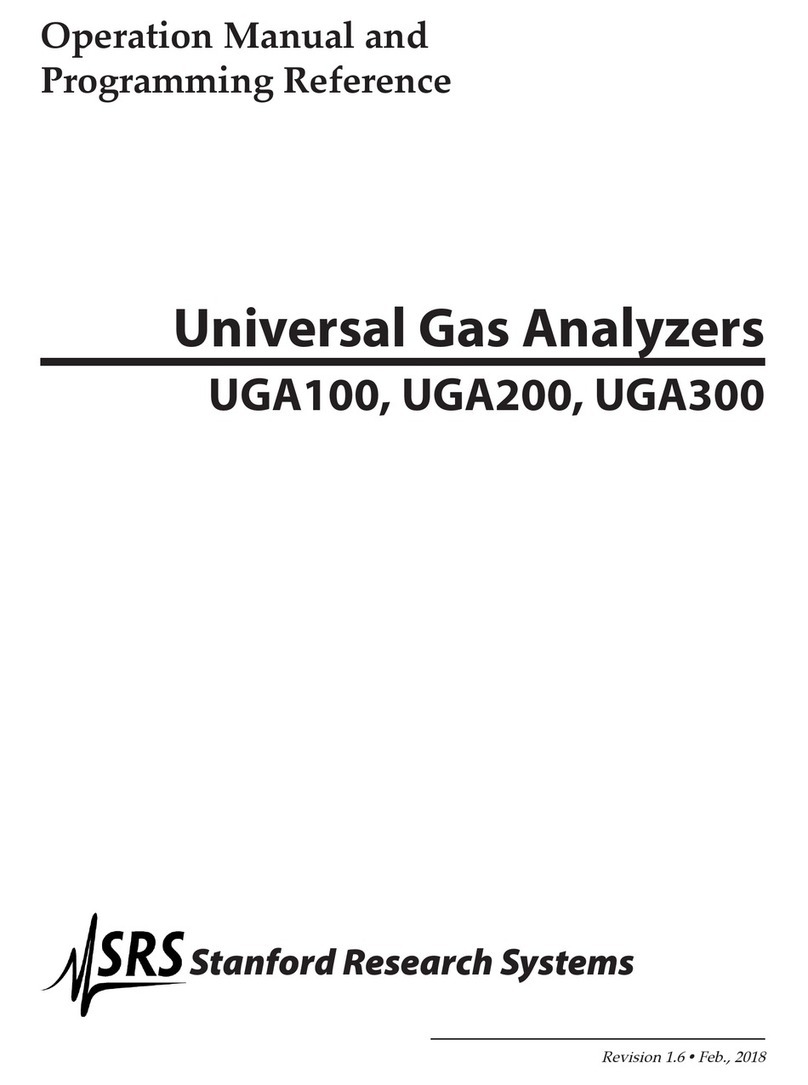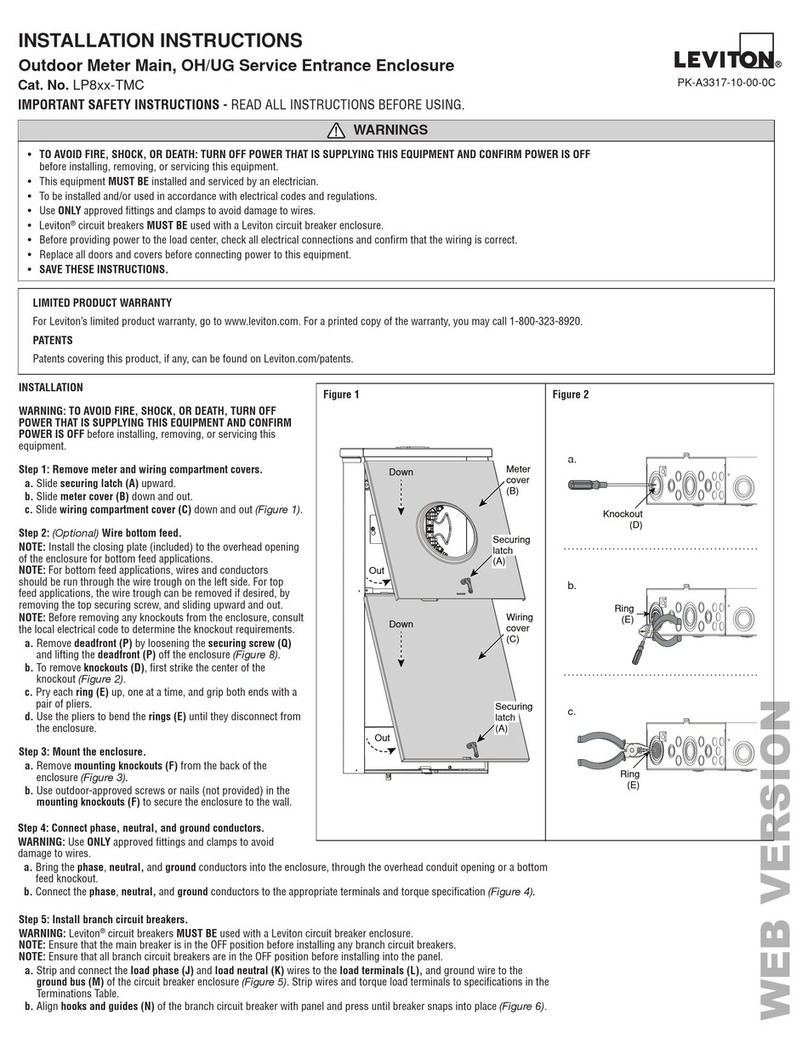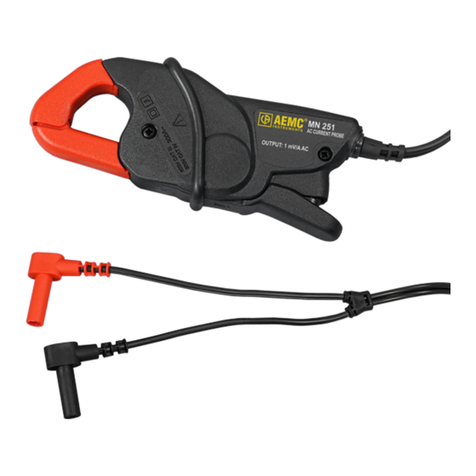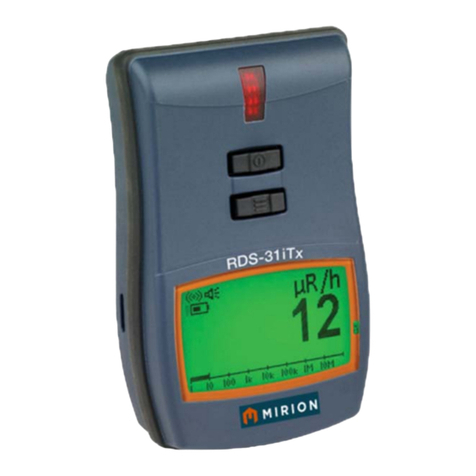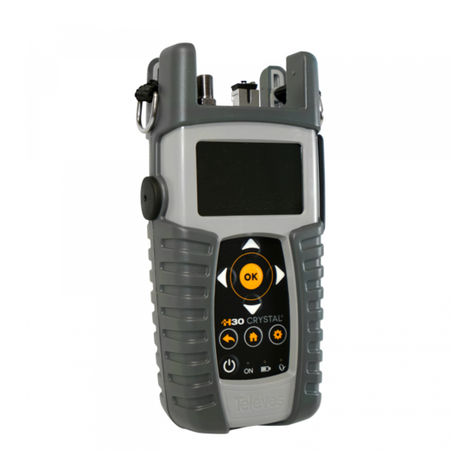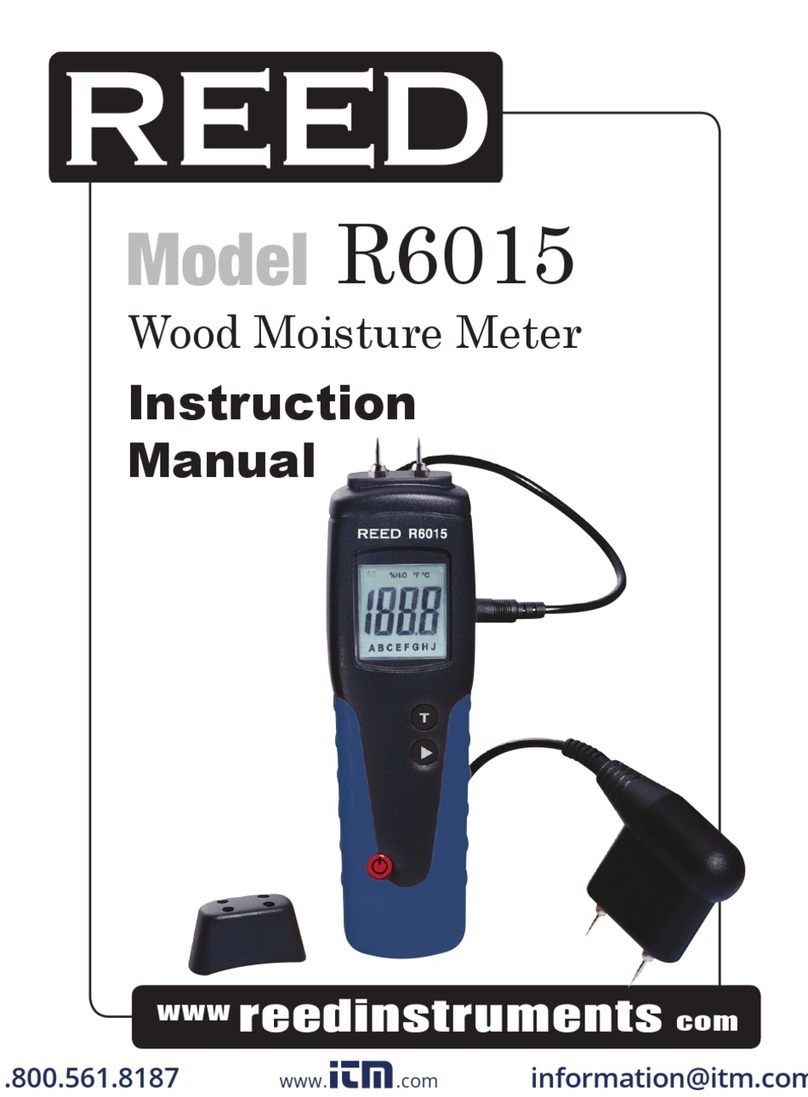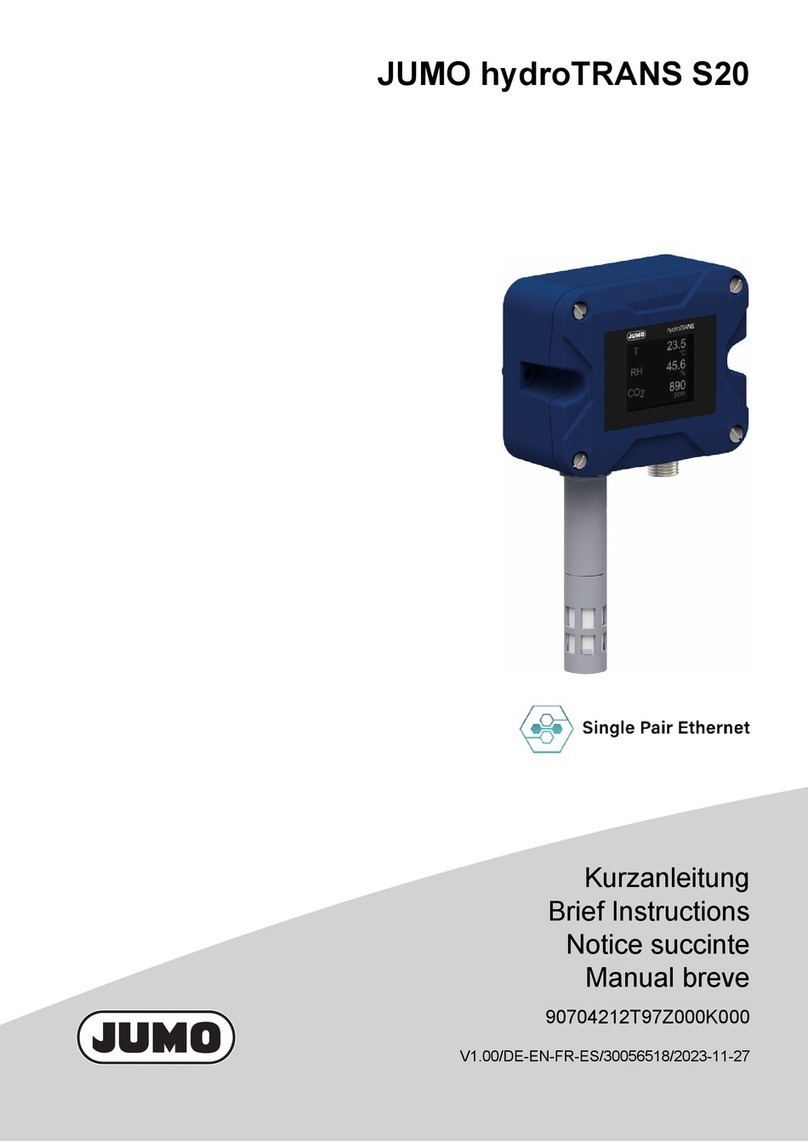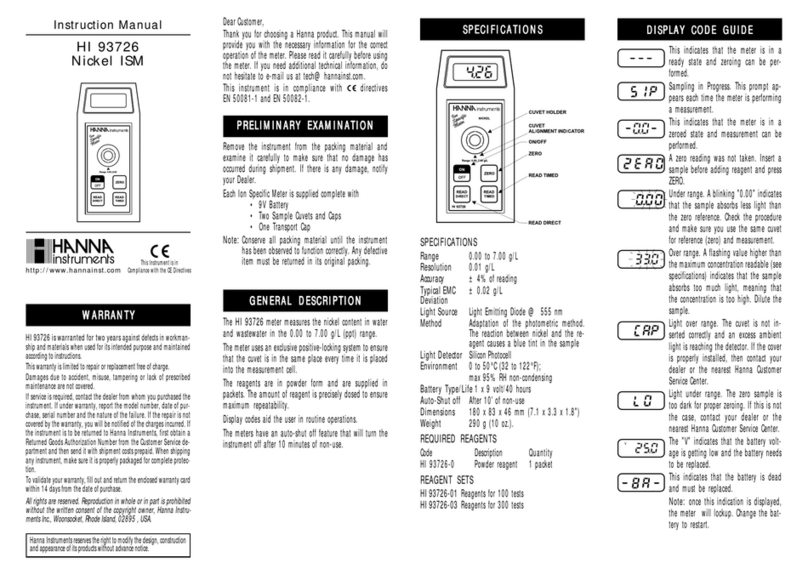SRS Labs SIM970 Operation manual

Operation and Service Manual
Quad Digital Voltmeter
SIM970
Stanford Research Systems
Revision 1.19 •May 28, 2010

Certification
Stanford Research Systems certifies that this product met its published specifications at the time
of shipment.
Warranty
This Stanford Research Systems product is warranted against defects in materials and workman-
ship for a period of one (1) year from the date of shipment.
Service
For warranty service or repair, this product must be returned to a Stanford Research Systems
authorized service facility. Contact Stanford Research Systems or an authorized representative
before returning this product for repair.
Information in this document is subject to change without notice.
Copyright c
Stanford Research Systems, Inc., 2003 – 2010. All rights reserved.
Stanford Research Systems, Inc.
1290–D Reamwood Avenue
Sunnyvale, CA 94089 USA
Phone: (408) 744-9040 •Fax: (408) 744-9049
Printed in U.S.A. Document number 9-01559-903
SIM970 Quad Digital Voltmeter

Contents
General Information iii
Safety and Preparation for Use . . . . . . . . . . . . . . . . iii
Symbols ............................. iv
Notation ............................. v
Specifications .......................... vi
1 Getting Started 1 – 1
1.1 Introduction to the Instrument . . . . . . . . . . . . . 1 – 2
1.2 Front-Panel Operation . . . . . . . . . . . . . . . . . . 1 – 3
1.3 Input Protection . . . . . . . . . . . . . . . . . . . . . . 1 – 4
1.4 Power-On ......................... 1–5
1.5 Restoring the Default Configuration . . . . . . . . . . 1 – 6
1.6 SIMInterface........................ 1–7
2 Description of Operation 2 – 1
2.1 Operating Modes . . . . . . . . . . . . . . . . . . . . . 2 – 2
2.2 Autoranging........................ 2–8
2.3 Controlling the Mode and Auto Settings . . . . . . . . 2 – 9
2.4 Other Instrument Features . . . . . . . . . . . . . . . . 2 – 10
2.5 Triggering ......................... 2–10
3 Remote Operation 3 – 1
3.1 Index of Common Commands . . . . . . . . . . . . . . 3 – 2
3.2 Alphabetic List of Commands . . . . . . . . . . . . . . 3 – 4
3.3 Introduction ........................ 3–6
3.4 Commands......................... 3–6
3.5 StatusModel........................ 3–18
i

ii Contents
SIM970 Quad Digital Voltmeter

General Information
The SIM970 Quad Digital Voltmeter, part of Stanford Research Sys-
tems’ Small Instrumentation Modules family, consists of four isolated
digital voltmeter (DVM) channels. Five and a half digits of resolution
and overall accuracy are available for inputs within ±20 volts.
Safety and Preparation for Use
The front-panel inputs to the SIM970 are isolated from the Earth, the
power-line-outlet ground, the metal chassis of the module, and from
each other. No dangerous voltages are generated by the module.
However, if a dangerous voltage is applied to an input, it may be
WARNING present on the outer casing of the input coaxial (BNC) connector, and
may cause injury or death.
Do not exceed ±20 volts to the Earth at the positive (center) terminal of
each input connector. Do not exceed ±20 volts to the Earth at the negative
(shield) terminal of each input connector.
Do not install substitute parts or perform unauthorized modifications
to this instrument.
The SIM970 is a double-wide module designed to be used inside the
SIM900 Mainframe. Do not turn on the power to the mainframe or
apply voltage inputs to the module until the module is completely
inserted into the mainframe and locked in place.
iii

iv General Information
Symbols you may Find on SRS Products
Symbol Description
Alternating current
Caution - risk of electric shock
Frame or chassis terminal
Caution - refer to accompanying documents
Earth (ground) terminal
Battery
Fuse
On (supply)
Off (supply)
SIM970 Quad Digital Voltmeter

General Information v
Notation
The following notation will be used throughout this manual:
A warning means that injury or death is possible if the instructions
WARNING are not obeyed.
A caution means that damage to the instrument or other equipment
CAUTION is possible.
•Front-panel buttons are set as [Button];
[Adjust ] is shorthand for “[Adjust ] & [Adjust ]”.
•Front-panel indicators are set as Overload.
•Signal names are set as BUSY.
•Signal levels are set as HIGH.
•Remote command names are set as *IDN?.
•Literal text other than command names is set as OFF.
•Special ASCII characters are set as hCRi.
SIM970 Quad Digital Voltmeter

vi General Information
Specifications
Ranges, Resolution, and Noise
Under front-panel operation, the SIM970 has four voltage ranges.
See Table 2.1 for more details.
Range Maximum input
voltage Resolution [1] Noise,
counts rms [2, 3]
1±19.9999 V 100 µV 1.5
2±1.99999 V 10 µV 0.8
3±999.99 mV 10 µV 0.8
4±199.999 mV 1 µV 1.0
Conditions:
[1] 7 1
/2digits, or 24 bits, of resolution are available through the remote
interface.
[2] One count is a unit change in the least-significant digit. Each front-
panel display of the SIM970 has a capacity of ±199999 counts.
[3] Measured over 360 consecutive readings.
Accuracy
Accuracy specifications [4, 5] are the same for all four channels. The
four channels have isolated circuitry, so no channel-matching speci-
fications exist.
In ±(reading ×10−6+counts) [2]
Range 24 hours,
(23 ±1)◦C
90 days,
(23 ±5)◦C
1 year,
(23 ±5)◦C
110 +2 50 +2 80 +2
22+2 50 +2 80 +2
32+2 50 +2 80 +2
42+4 50 +6 80 +6
(Relative to calibration standards [7])
Transfer accuracy: (24-hour count error)/2 (typ.) [6]
Conditions:
[4] Inside a fully occupied SIM900 Mainframe; following a 2-hour
warmup.
[5] Specifications apply to Ranges 1 through 4 only, locally triggered (Ta-
ble 2.1).
[6] Within 10 minutes and ±0.5◦C,within ±10% of the initial value, on a
fixed range, input voltage between 10% and 100% of the maximum
for the range.
[7] The absolute accuracy of the SRS factory calibration standard with
respect to the United States NIST is 6 ×10−6of the reading.
SIM970 Quad Digital Voltmeter

General Information vii
Measuring Characteristics
Min Typ Max Units
Autoranging limits Range 1 1.90000 V
Range 2 .95000 1.99999 V
Range 3 190.00 999.99 mV
Range 4 199.999 mV
Input Resistance [8] 9.9 10.0 10.1 MΩ
3 GΩ
Bias current [9] 1 pA
Terminals Isolated BNC [10]
Protection, center to shield ±60 V
Protection, shield to Earth ±200 V
Trigger Source Local, external, or remote
External input Rear BNC; TTL; active LOW
Latency 480 µs
BUSY output Rear BNC; TTL; active HIGH
BUSY impedance 50 Ω
Measurement Method 24-bit, Delta-Sigma A/D converter
A/D linearity Corrected by firmware [11]
Normal-mode rejection [12] 90 dB
Common-mode rejection, DC [13] 125 dB
Output Update frequency, 50 Hz FPLC [5] 3.0 Hz
Update frequency, 60 Hz FPLC [5] 3.6 Hz
Settling time, Ranges 1–3 [5, 14] 1 s
Settling time, Range 4 [5, 14] 10 s
Displays Red numeric LED, 0.30”
Green LED, range and autorange
Operating Temperature [15] 0 40 ◦C
Power +5 V DC
Supply current 480 mA
Conditions:
[8] Input resistance is 10 MΩfor Ranges 1 through 4. Operating modes
with >3 GΩinput resistance exist (Table 2.1).
[9] At 23 ◦C.
[10] Amphenol 31–10–4052 or similar.
[11] Included in the accuracy specifications.
[12] At power-line frequency (FPLC): 59 Hz to 61 Hz or 49 Hz to 51 Hz.
[13] For 1 kΩunbalance in the shield.
[14] To within 3 counts of the final reading, on a fixed range, for an input
voltage step of 50% of the maximum voltage for the range, for 0 Ω
source impedance.
[15] Non-condensing.
SIM970 Quad Digital Voltmeter

viii General Information
General Characteristics
Number of channels 4
Interface Serial (RS–232) through SIM interface
Connectors BNC (4 front [10], 2 rear); DB–15 (male) SIM interface
Weight 2.3 lbs
Dimensions 3.000 W×3.600 H×7.000 D
SIM970 Quad Digital Voltmeter

1 Getting Started
This chapter gives you the necessary information to get started
quickly with your SIM970 Quad Digital Voltmeter.
In This Chapter
1.1 Introduction to the Instrument . . . . . . . . . . . . . 1 – 2
1.1.1 Front panel . . . . . . . . . . . . . . . . . . . . 1 – 2
1.1.2 Rearpanel..................... 1–3
1.2 Front-Panel Operation . . . . . . . . . . . . . . . . . . 1 – 3
1.3 Input Protection . . . . . . . . . . . . . . . . . . . . . 1 – 4
1.4 Power-On ......................... 1–5
1.5 Restoring the Default Configuration . . . . . . . . . 1 – 6
1.6 SIMInterface ....................... 1–7
1.6.1 SIM interface connector . . . . . . . . . . . . . 1 – 7
1.6.2 Direct interfacing . . . . . . . . . . . . . . . . . 1 – 7
1–1

1–2 Getting Started
1.1 Introduction to the Instrument
The SIM970 Quad Digital Voltmeter is designed to make precision
low-frequency voltage measurements with excellent long-term accu-
racy. The four channels are galvanically isolated from one another
and from the Earth (chassis ground). Autocalibration is performedchassis ground
with every reading by sequentially measuring not only the input
voltage, but also the ground voltage and a fixed mid-scale voltage
against a calibrated internal reference. This autocalibration routine
virtually eliminates offsets and scale errors.
Computer access through the SIM900 Mainframe (RS–232 or GPIB)
permits input voltage logging with 24 bits of resolution. This re-remote interface
mote interface allows the user to exercise detailed control over the
instrument’s settings.
An external trigger input allows synchronization of voltage readings
on all four channels for applications requiring coincidental readings.
The same functionality can also be achieved through the remote
interface.
1.1.1 Front panel
Figure 1.1: The SIM970 front panel.
SIM970 Quad Digital Voltmeter

1.2 Front-Panel Operation 1–3
Figure 1.2: The SIM970 rear panel.
1.1.2 Rear panel
For a description of the rear-panel connectors and triggered opera-
tion, see Section 2.5.
1.2 Front-Panel Operation
Each channel of the SIM970 measures a voltage applied between theBNC
center (inner) terminal of a front-panel coaxial (BNC) connector andcenter terminal
the shield (outer) terminal of the connector. The center terminal isshield terminal
the positive input, whereas the shield is the negative input.
You can only reach specific modes of operation, which are Ranges 1
through 4, Table 2.1, from the front panel. When the instrument
powers up, autoranging (Section 2.2) is turned on. When autorang-
ing is on, the current range is determined by the magnitude of the
input voltage. The automatically selected range will generally be the
one that will accommodate the input voltage without overloading
the input stage of the instrument, and will produce a display read-
ing with the highest possible resolution. When autoranging is on,
short front-panel button presses do nothing (except as noted below
for operation from the remote interface).
In order to turn autoranging off, hold the front-panel button for a
SIM970 Quad Digital Voltmeter

1–4 Getting Started
specific channel for more than 1.5 seconds. The Auto annunciator
will turn off. After autoranging is OFF, short button presses will
switch between ranges in the sequence Range 1, Range 2, Range 3,
Range 4, and back to Range 1, starting from the current range.
To turn autoranging back on, hold the button for more than 1.5 sec-
onds. Auto will turn on.
The remote interface allows the user to exercise specific control over
the operation of the SIM970. If, from the remote interface, the instru-
ment had been put into an operating mode that is not one of Ranges 1
through 4 (see Section 2.1 for a description of operating modes), a
front-panel button press will take the SIM970 into one of Ranges 1
through 4. Range closest to the remotely selected operating mode
will be chosen. See Section 2.3.2 for more details.
The preceding description of front-panel buttons behavior also ap-
plies to EXTERNAL triggering in addition to LOCAL triggering. See
Section 2.5.2 for a discussion of externally triggered behavior.
1.3 Input Protection
Each input to the SIM970, i.e. the voltage difference between the
center terminal of each front coaxial connector and the connector’s
shield terminal, should not exceed ±20 V at all times. While this
voltage is exceeded, the instrument is not guaranteed to perform
to its specifications. If the absolute magnitude of the input voltage
exceeds 30 V with the input attenuator ON (Section 2.1.2), or 3.0 V
for input attenuator OFF or OUT, an input-protection circuit will be
activated (tripped), disconnecting the input voltage from the rest
of the SIM970’s circuitry. If this happens, the following message is
displayed on the front panel:
If the protection circuit is activated, there will be no new voltage
readings available through the remote interface.
In order to clear the protection circuit, push the front-panel button for
the tripped channel once. If the overload condition no longer exists,
the protection circuit will turn off. The instrument will automatically
attempt to clear the trip after the overload condition has occurred,
but will do so only once. The trip can also be cleared from the remote
interface by issuing the command TRIP.
While a channel is tripped, the SIM970 is safe and guaranteed to
perform to specifications after the overload condition ceases. The
SIM970 Quad Digital Voltmeter

1.4 Power-On 1–5
magnitude of the input voltage must never exceed ±60 V in order for
the SIM970 to be safe and return to its specified performance.
The shield terminal of each front-panel coaxial connector is not insulated,
and is potentially exposed to the user. Applying dangerous voltages to this
terminal is unsafe, and may cause injury or death.
Although the inputs to the SIM970 are galvanically isolated from the
Earth (i.e. the chassis ground), it is not recommended to exceed ±20 V
between the center input terminal and the Earth, or between the
shield terminal and the Earth. The instrument is not guaranteed to
perform to its specifications while these values are exceeded. The
SIM970 is guaranteed to perform to the specifications after the over-
load condition between an input terminal and the Earth ceases if
none of the input terminals ever exceed ±200 V, relative to the Earth.
1.4 Power-On
Upon power-on, the instrument performs a self-test. A message is
displayed on the front panel during this time:
All of the green annunciator LEDs subsequently turn on. At the end
of the test, the LEDs turn offand the instrument starts taking voltage
readings.
The instrument does not save operation-related settings. The only
non-volatile settings that are retained while the instrument is not
powered are calibration values and the power line frequency: 60 Hz
or 50 Hz. The latter equals the principal rejection frequency of an
internal filter.
The power-on configuration of the remote interface is detailed in
Section 3.3.1.
SIM970 Quad Digital Voltmeter

1–6 Getting Started
1.5 Restoring the Default Configuration
The default configuration of the SIM970 is Range 1 on all four chan-
nels with autoranging on (more precisely, autoranging set to ALL; see
Section 2.2), with LOCAL triggering. It is the power-on configuration.
To restore it, turn the SIM900 Mainframe power offand then on.
The same configuration can also be reached from the remote interface
by issuing the *RST command.
SIM970 Quad Digital Voltmeter

1.6 SIM Interface 1–7
1.6 SIM Interface
The primary connection to the SIM970 Quad Digital Voltmeter is the
rear-panel DB–15 SIM interface connector. Typically, the SIM970 is
mated to a SIM900 Mainframe via this connection, either through
one of the internal mainframe slots, or the remote cable interface.
It is also possible to operate the SIM970 directly, without using the
SIM900 Mainframe. This section provides details on the interface.
1.6.1 SIM interface connector
The DB–15 SIM interface connector carries all the power and commu-
nication lines to the instrument. The connector signals are specified
in Table 1.1.
Direction
Pin Signal Src ⇒Dest Description
1 SIGNAL GND MF ⇒SIM Ground reference for signal
2−STATUS SIM ⇒MF Status/service request (GND=asserted, +5 V=idle)
3 RTS MF ⇒SIM HW Handshake (unused in SIM970)
4 CTS SIM ⇒MF HW Handshake (unused in SIM970)
5−REF 10MHZ MF ⇒SIM 10 MHz reference (optional connection)
6−5V MF ⇒SIM Power supply (No connection in SIM970)
7−15V MF ⇒SIM Power supply (No connection in SIM970)
8 PS RTN MF ⇒SIM Power supply return
9 CHASSIS GND Chassis ground
10 TXD MF ⇒SIM Async data (start bit=“0”= +5 V; “1”=GND)
11 RXD SIM ⇒MF Async data (start bit=“0”= +5 V; “1”=GND)
12 +REF 10MHZ MF ⇒SIM 10 MHz reference (optional connection)
13 +5V MF ⇒SIM Power supply
14 +15V MF ⇒SIM Power supply (No connection in SIM970)
15 +24V MF ⇒SIM Power supply (No connection in SIM970)
Table 1.1: SIM interface connector pin assignments, DB–15.
1.6.2 Direct interfacing
The SIM970 is intended for operation in the SIM900 Mainframe, but
users may wish to directly interface the module to their own systems
without the use of additional hardware.
The mating connector needed is a standard DB–15 receptacle, such as
Amp part number 747909–2 (or equivalent). A clean, well-regulated
supply voltage of +5.0 V DC must be provided, following the pinout
specified in Table 1.1. Ground must be provided on Pin 8, with
chassis ground on Pin 9. The −STATUS signal may be monitored
on Pin 2 for a low-going TTL-compatible output indicating a status
message. See Section 3.5 for the description of status messages.
SIM970 Quad Digital Voltmeter

1–8 Getting Started
The SIM970 has no internal protection against reverse polarity or overvolt-
CAUTION age on the +5V power-supply pin. A supply voltage above 5.5 V is likely
to damage the instrument.
1.6.2.1 Direct interface cabling
If the user intends to directly wire the SIM970 independent of the
SIM900 Mainframe, communication is usually possible by directly
connecting the appropriate interface lines from the SIM970 DB–15
plug to the RS–232 serial port of a personal computer.1Connect RXD
from the SIM970 directly to RD on the PC, TXD directly to TD, and
similarly RTS→RTS and CTS→CTS. In other words, a null-modem-
style cable is not needed.
To interface directly to the DB–9 male (DTE) RS–232 port typically
found on contemporary personal computers, a cable must be made
with a female DB–15 socket to mate with the SIM970, and a female
DB–9 socket to mate with the PC’s serial port. Separate leads from
the DB–15 need to go to the power supply, making what is sometimes
know as a “hydra” cable. The pin connections are given in Table 1.2.
DB–15/F to SIM970 Name
DB–9/F
10 → 3 TxD
11 → 2 RxD
5 Computer Ground
to Power Supply
13 → +5 V DC
8,9 → Ground (Supply return current)
Table 1.2: SIM970 direct interface cable pin assignments.
1.6.2.2 Serial settings
The initial serial port settings at power-on are: baud rate 9600, 8 bits,
no parity, 1 stop bit, and no flow control. These may be changed with
the BAUD or PARI commands.
The maximum standard baud rate that the SIM970 supports is 38400.
The minimum baud rate is 110. Above 38400, the SIM970 can be
set to the following (non-RS–232-standard) baud rates: 62500, 78125,
104167, 156250. Note that these rates are typically not accessible on
1Although the serial interface lines on the DB–15 do not satisfy the minimum
voltage levels of the RS–232 standard, these lines are typically compatible with
desktop personal computers.
SIM970 Quad Digital Voltmeter

1.6 SIM Interface 1–9
a standard PC RS–232 port, but can be used between the SIM970 and
the SIM900 Mainframe.
SIM970 Quad Digital Voltmeter

1 – 10 Getting Started
SIM970 Quad Digital Voltmeter
Table of contents
Other SRS Labs Measuring Instrument manuals

SRS Labs
SRS Labs SR625 User manual
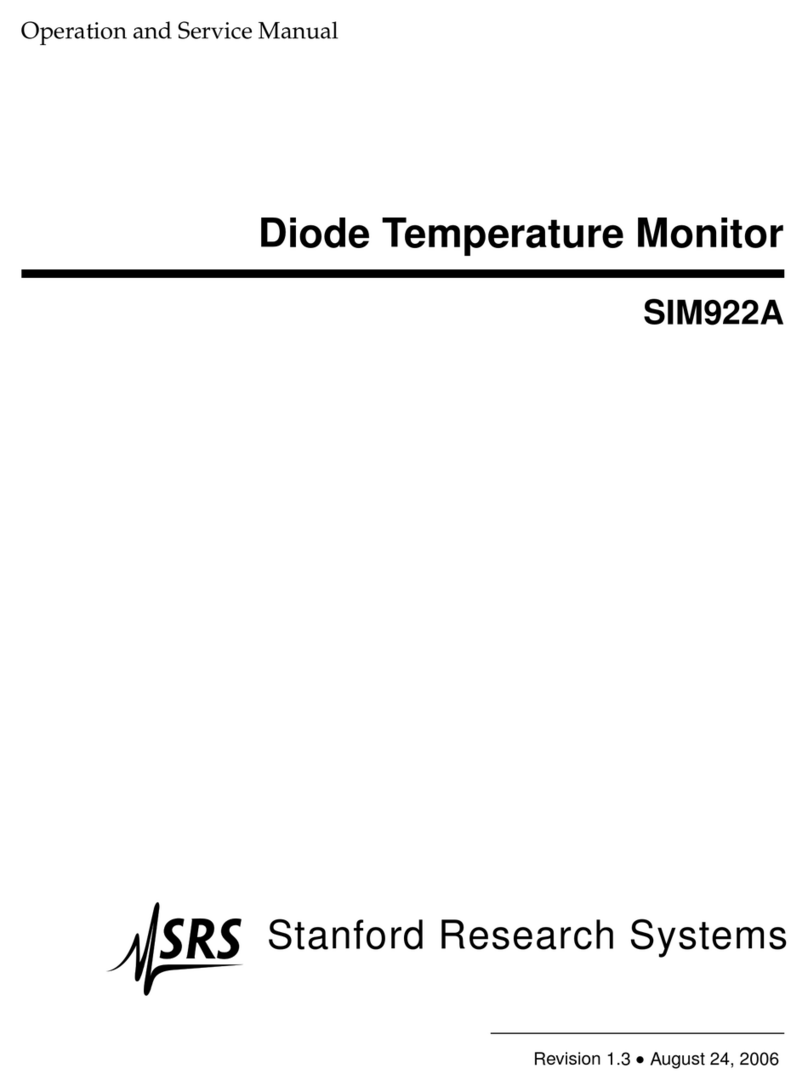
SRS Labs
SRS Labs SIM922A Operation manual
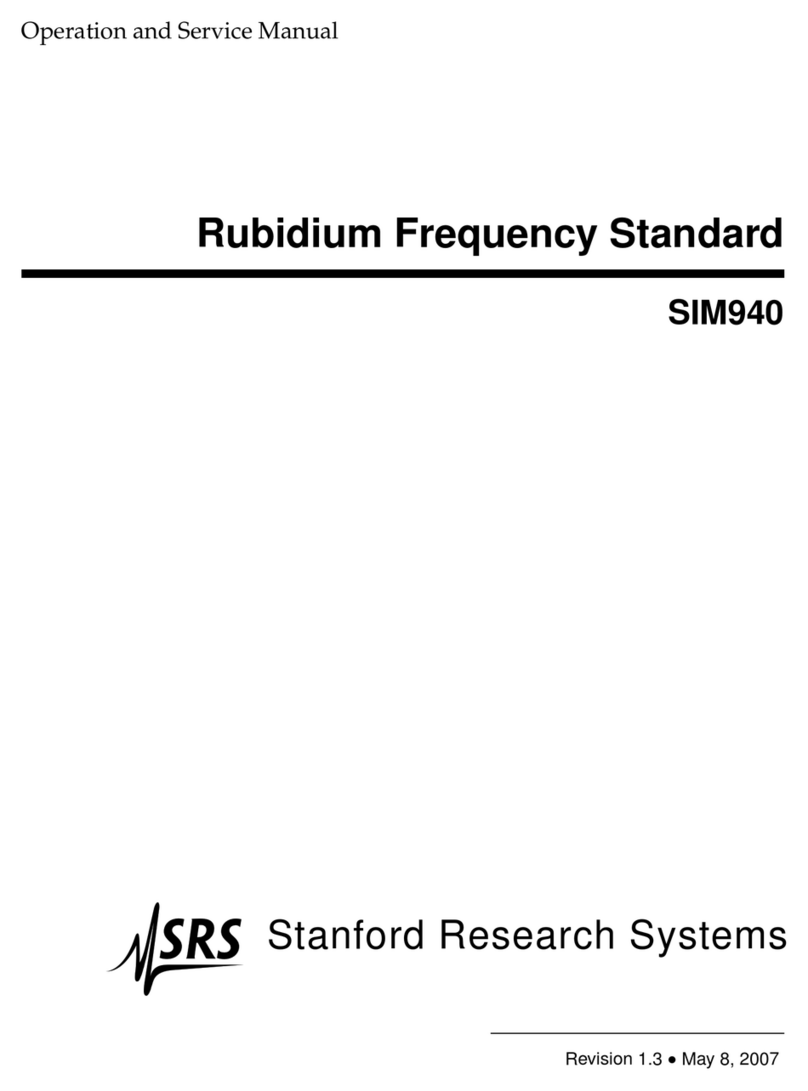
SRS Labs
SRS Labs SIM940 Operation manual
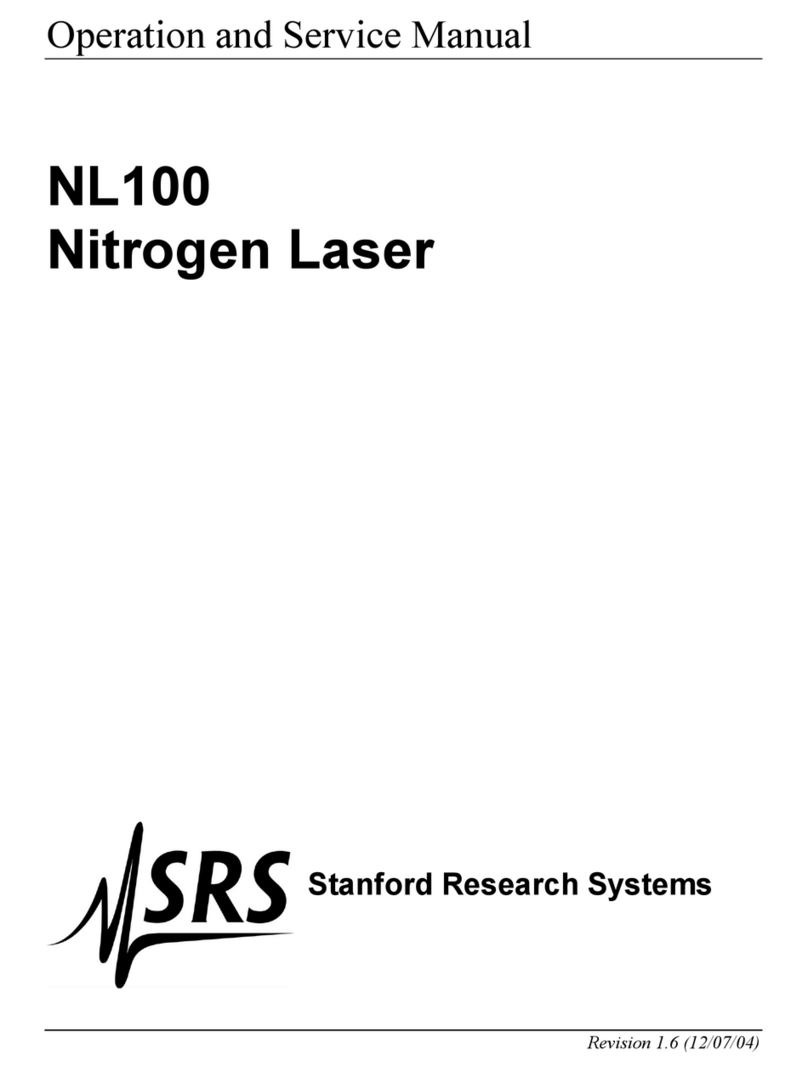
SRS Labs
SRS Labs Nitrogen Laser NL100 Operation manual
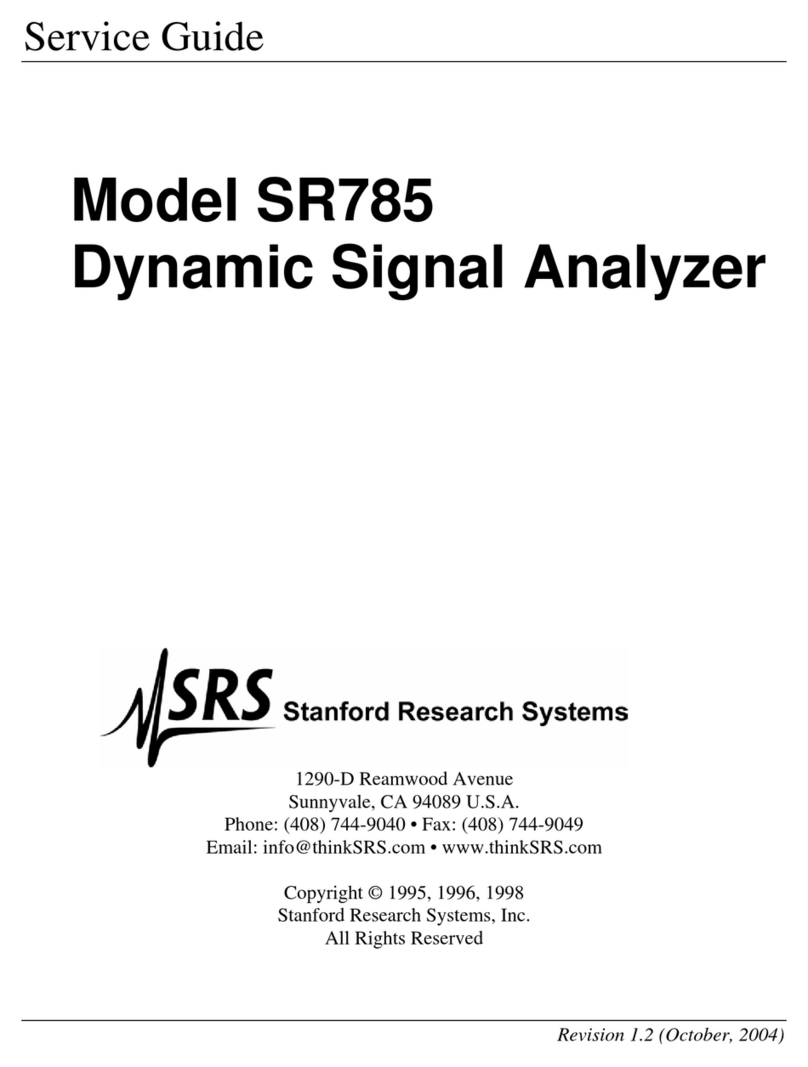
SRS Labs
SRS Labs SR785 User manual
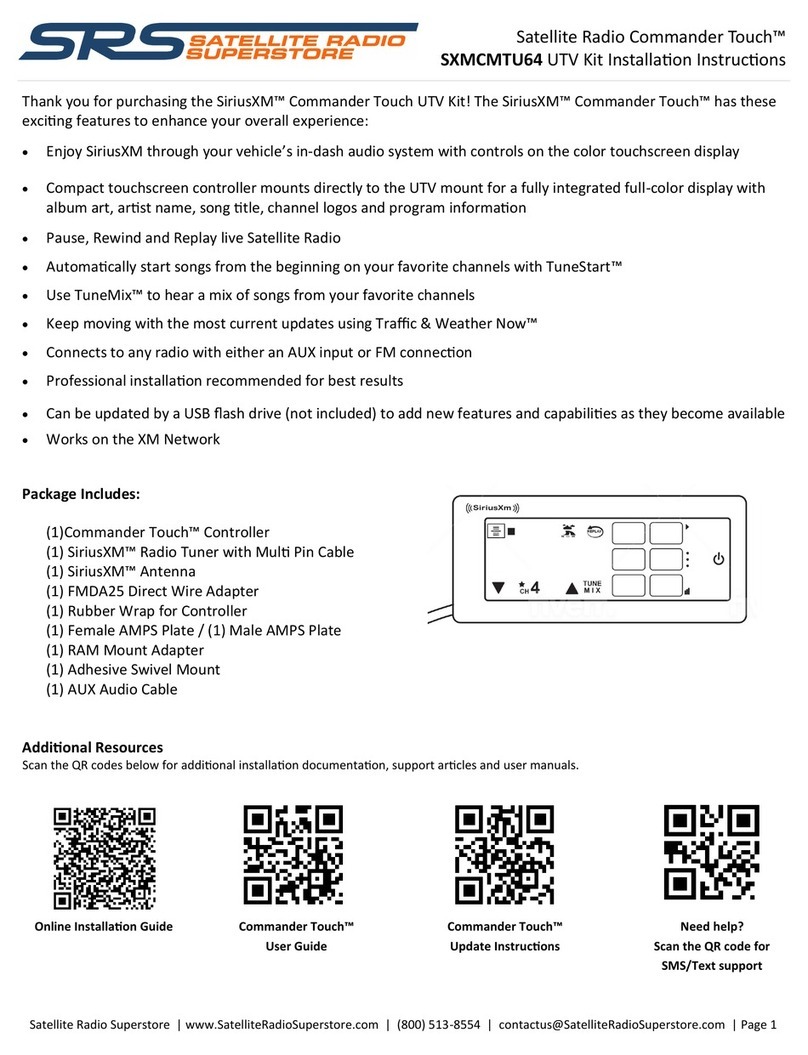
SRS Labs
SRS Labs SXMCMTU64 User manual
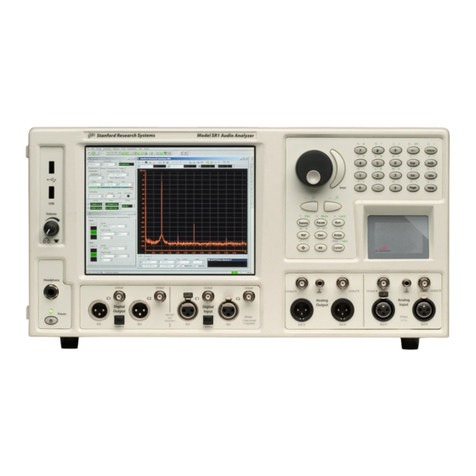
SRS Labs
SRS Labs SR1 Manual
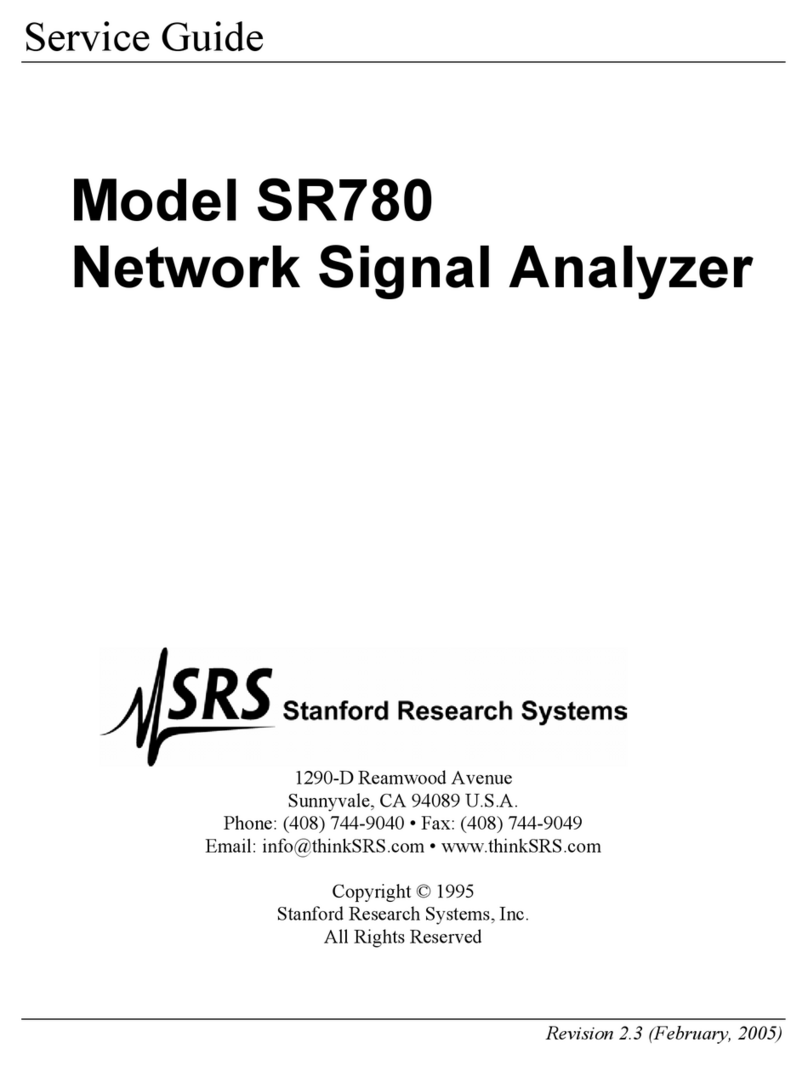
SRS Labs
SRS Labs SR780 User manual
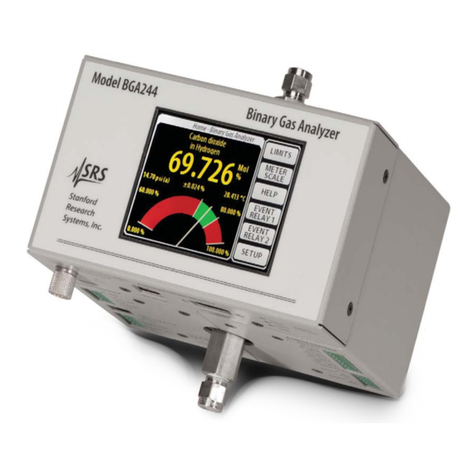
SRS Labs
SRS Labs BGA244 User manual
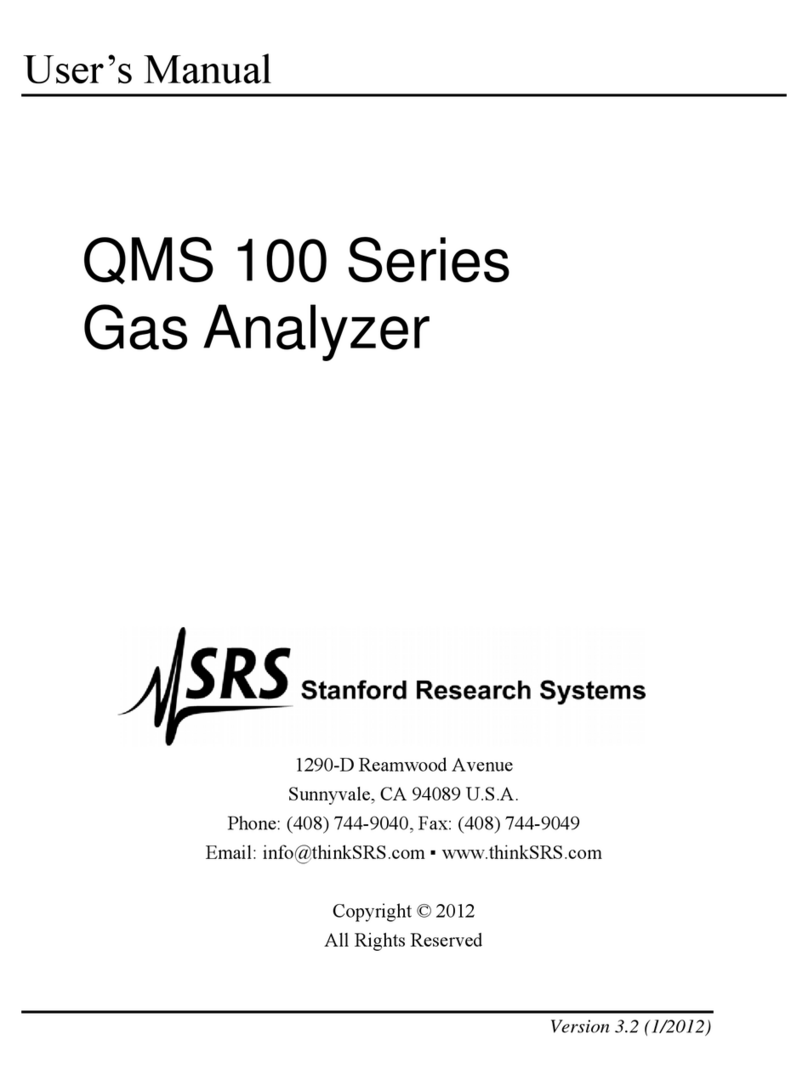
SRS Labs
SRS Labs QMS 100 Series User manual
Popular Measuring Instrument manuals by other brands
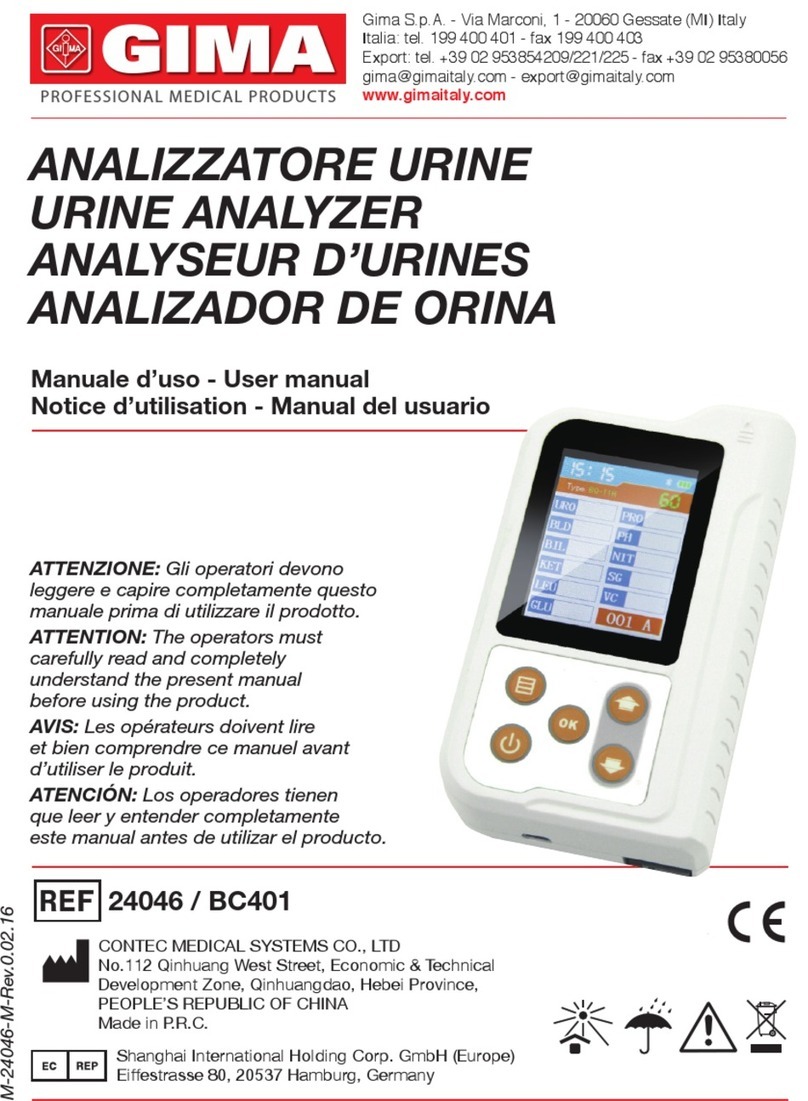
Gima
Gima BC401 user manual

RKI Instruments
RKI Instruments CO-04 Operator's manual
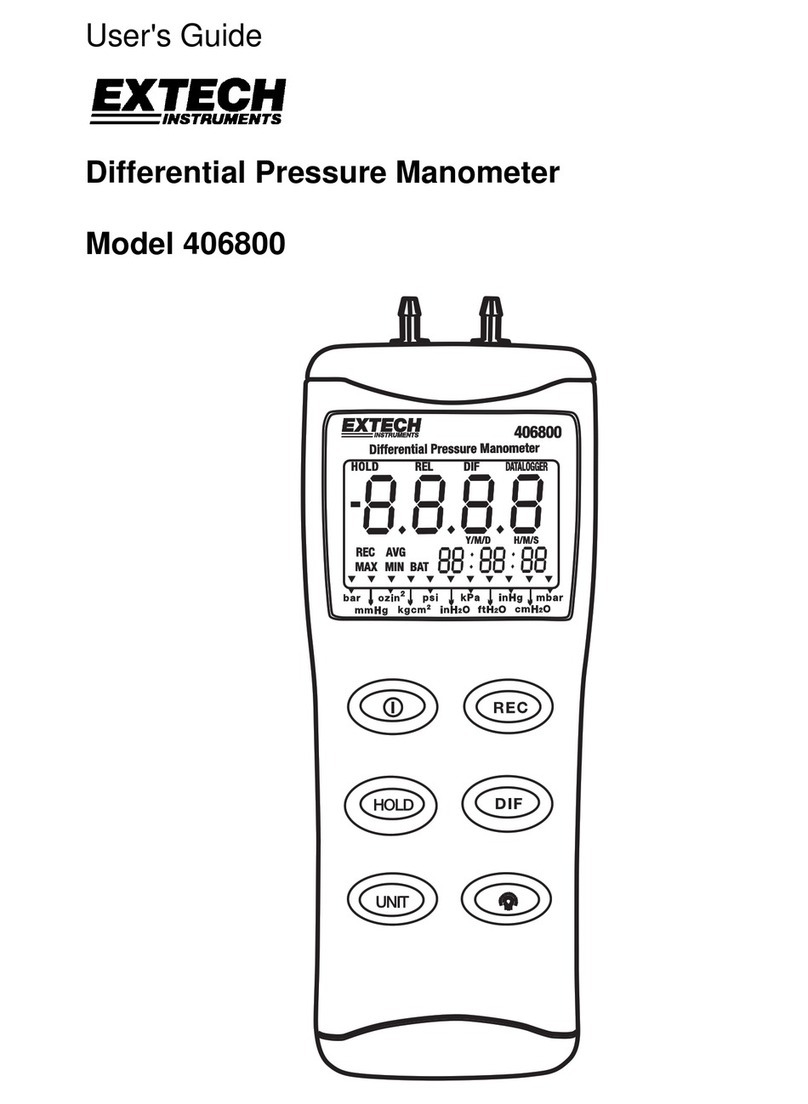
Extech Instruments
Extech Instruments 406800 user guide

Leuze
Leuze AMS 348i SSI Original operating instructions

VINVENTIONS
VINVENTIONS Wine Quality Solutions NOMASense CO2 P2000 quick guide
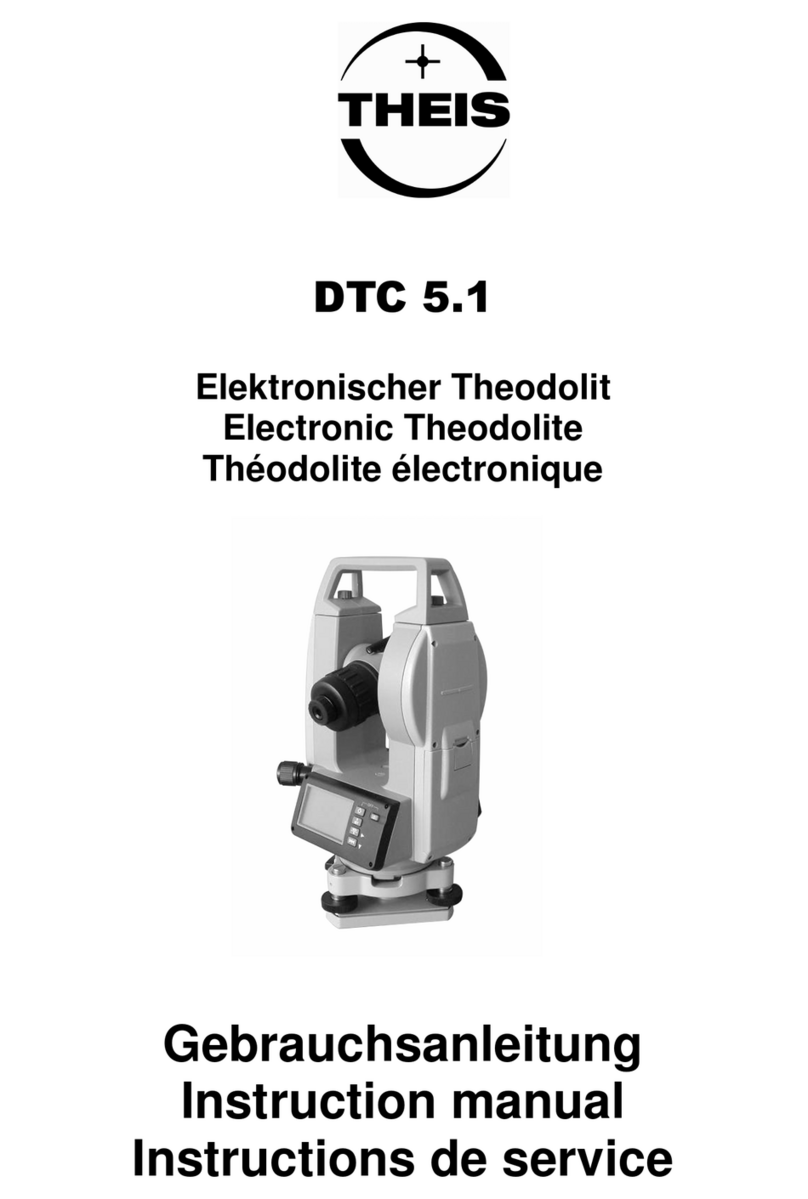
THEIS
THEIS DTC 5.1 instruction manual
